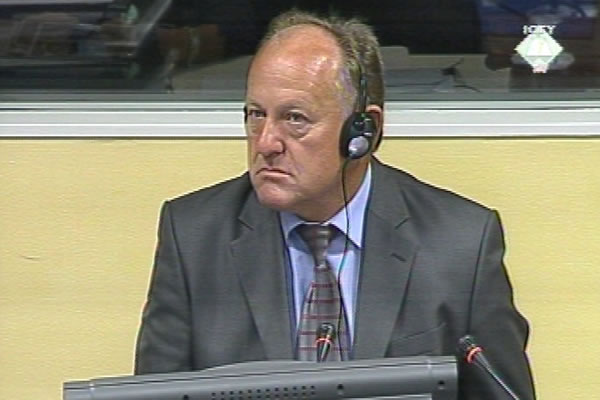Home
EVIDENCE ON DEPLYOMENT OF BH ARMY TROOPS IN SARAJEVO
Former intelligence officer in the Sarajevo-Romanija Corps Milorad Bukva gave evidence in Ratko Mladic’s defense. As Bukva said, the ‘Muslim forces’ in Sarajevo were between 35,000 and 38,000 strong and they used hospitals, schools and kindergartens as command posts and artillery positions
 Milorad Bukva, defence witness at Rako Mladic trial
Milorad Bukva, defence witness at Rako Mladic trial During the entire war in BH, Colonel Milorad Bukva was the chief intelligence officer in the Sarajevo-Romanija Corps. He was in charge of collecting information on the enemy forces in Sarajevo, Bukva explained. Through his evidence, Ratko Mladic’s defense is trying to corroborate the allegation that the BH Army was dominant in the Sarajevo battlefield. The BH Army, the defense argued, used numerous civilian facilities in the city for military purposes and thus turned them into legitimate military targets.
According to Bukva, there were between 35,000 and 38,000 fighters of the ‘Muslim forces’ in Sarajevo – primarily in the BH Army 1st Corps and the special police. Bukva claimed that the BH Army General Staff had its HQ in the BH Presidency building. The HQs of subordinate units were put in civilian buildings, including schools, kindergartens and hospitals. Artillery attacks were launched from those locations. Snipers opened fire from the city, Bukva maintained.
Asked to identify the sources of his information, the witness replied that the information was obtained through the surveillance of the enemy communications. His personnel followed the media reports, questioned the people fleeing Sarajevo through the Serb territory and had observation posts in the field. A map with positions and command posts of the BH Army at the Sarajevo frontline was admitted into evidence. The witness marked the map when he testified in the defense of the former Sarajevo-Romanija Corps commander Stanislav Galic.
Interestingly enough, Bukva said he was present when a telephone conversation between Alija Izetbegovic and Ejup Ganic had been intercepted. The conversation shed light on Izetbegovic and Ganic’s role in the attack on a JNA column pulling out in Dobrovoljacka Street. Bukva said the intercept was kept in the Bosnian Serb Army’s Banja Luka archive. The document was there until the witness retired from his service in 2007 but the defense hasn’t been able to obtain it.
In addition to the attack on the JNA column, in his statement to the defense team the witness said that according to his intelligence Serb civilians were abused in Sarajevo during the war. Serbs were killed and detained in prison camps and women were raped, Bukva specified. At the same time the witness denied that the units of his Corps were responsible for the artillery and sniper attacks on civilians inside the city. Mladic is on trial also for those crimes.
Prosecutor MacGregor asked the witness in great detail about his knowledge of the enemy troop dispositions in Sarajevo. The prosecutor noted small deviations from the map the witness had drawn and the military map the BH Army had used in the war. The witness explained that the differences were caused by the fact that during the war the units changed positions and command posts.
The prosecutor tried hard to understand the difference between military intelligence and military security. Bukva explained that his job in the intelligence service was to gather information about the enemy. His colleagues from the security service were there to prevent the leaks of information on the Bosnian Serb military units.
The cross-examination continues tomorrow when it will be completed.
Linked Reports
- Case : Mladic
- 2014-08-28 NO POINTS FOR PRESENTATION
- 2014-08-27 PROSECUTION CALLS FOR OPPORTUNITY TO PRESENT TOMASICA EVIDENCE
- 2014-08-26 DOCUMENTS FULL OF ‘ERRORS’
- 2014-09-02 PROBATIVE VALUE OF DEFENSE EVIDENCE – ‘ZERO’
- 2014-09-04 BOSNIAN SERB ‘NEW DEMOGRAPHIC POLICY’
- 2014-09-08 HOW TO RAZE ‘HALF OF SARAJEVO’ TO GROUND WITH ‘EMPTY GUN’
